Francisco Goya, The Third of May, 1808
In 1807, Napoleon, bent on conquering the world, brought Spain’s king, Charles IV, into alliance with him in order to conquer Portugal. Napoleon’s troops poured into Spain, supposedly just passing through. But Napoleon’s real intentions soon became clear: the alliance was a trick. The French were taking over. Joseph Bonaparte, Napoleon’s brother, was the new king of Spain.
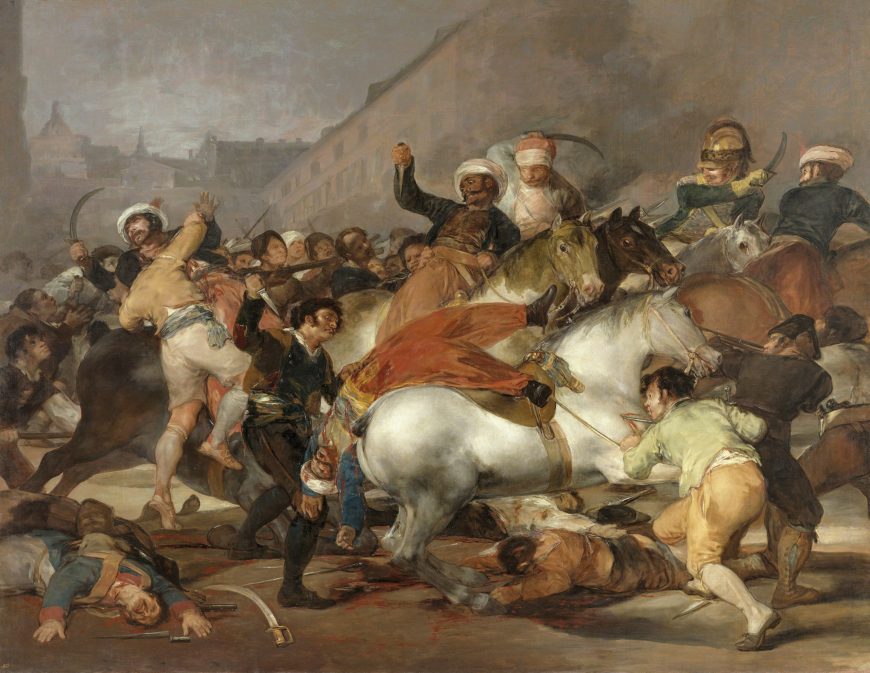
The 2nd and 3rd of May, 1808
On May 2, 1808, hundreds of Spaniards rebelled. On May 3, these Spanish freedom fighters were rounded up and massacred by the French. Their blood literally ran through the streets of Madrid. Even though Goya had shown French sympathies in the past, the slaughter of his countrymen and the horrors of war made a profound impression on the artist. He commemorated both days of this gruesome uprising in paintings. Although Goya’s Second of May is a tour de force of twisting bodies and charging horses reminiscent of Leonardo’s Battle of Anghiari, his The Third of May, 1808 in Madrid is acclaimed as one of the great paintings of all time, and has even been called the world’s first modern painting.
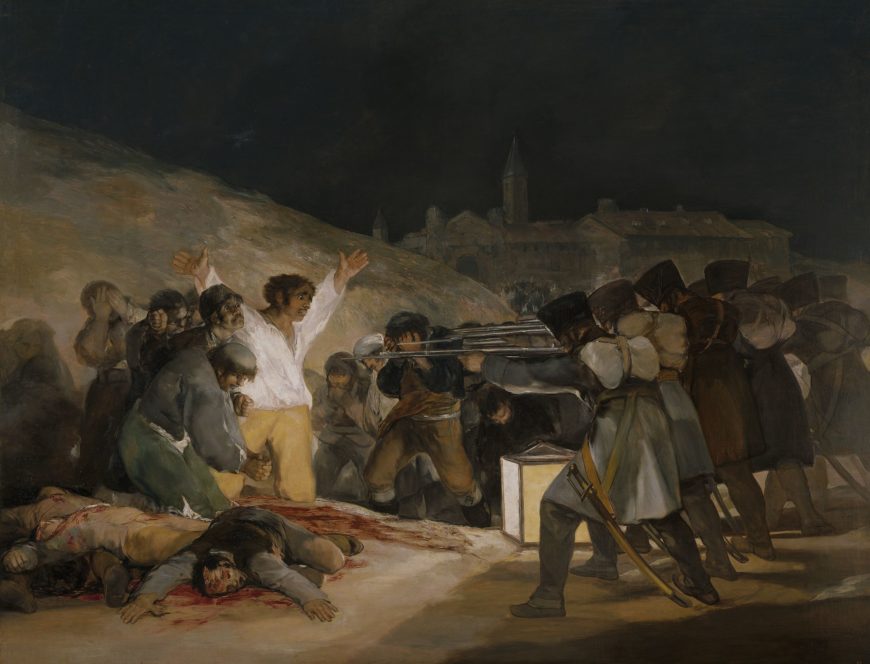
Death awaits
We see row of French soldiers aiming their guns at a Spanish man, who stretches out his arms in submission both to the men and to his fate. A country hill behind him takes the place of an executioner’s wall. A pile of dead bodies lies at his feet, streaming blood. To his other side, a line of Spanish rebels stretches endlessly into the landscape. They cover their eyes to avoid watching the death that they know awaits them. The city and civilization are far behind them. Even a monk, bowed in prayer, will soon be among the dead.
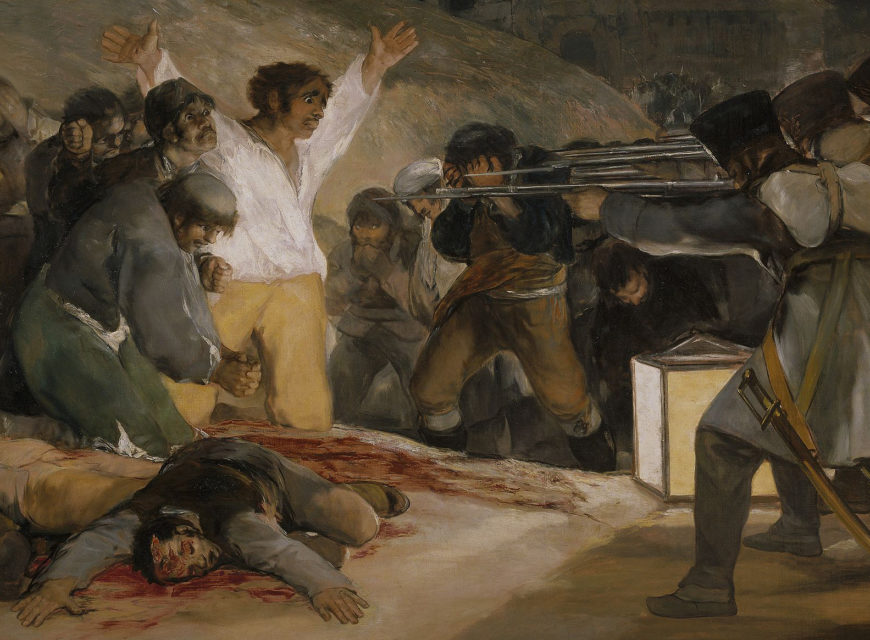
Transforming Christian iconography
Goya’s painting has been lauded for its brilliant transformation of Christian iconography and its poignant portrayal of man’s inhumanity to man. The central figure of the painting, who is clearly a poor laborer, takes the place of the crucified Christ; he is sacrificing himself for the good of his nation. The lantern that sits between him and the firing squad is the only source of light in the painting and dazzlingly illuminates his body, bathing him in what can be perceived as spiritual light. His expressive face, which shows an emotion of anguish that is more sad than terrified, echoes Christ’s prayer on the cross: “Forgive them Father, they know not what they do.” (Luke 23:24)
Close inspection of the victim’s right hand also shows stigmata, referencing the marks made on Christ’s body during the Crucifixion.
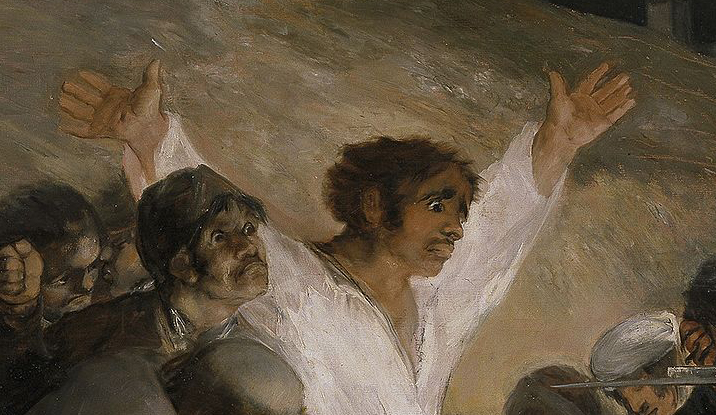
The man’s pose not only equates him with Christ, but also acts as an assertion of his humanity. The French soldiers, by contrast, become mechanical or insect-like. They merge into one faceless, many-legged creature incapable of feeling human emotion. Nothing is going to stop them from murdering this man. The deep recession into space seems to imply that this type of brutality will never end.
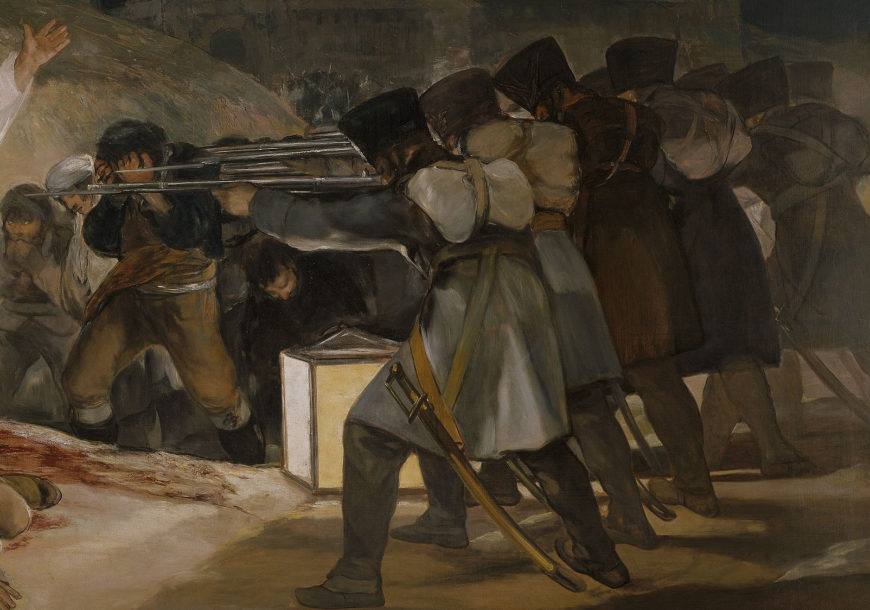
Legacy
Along with Picasso’s Guernica, Goya’s The Third of May 1808 in Madrid remains one of the most chilling images ever created of the atrocities of war, and it is difficult to imagine how much more powerful it must have been in the pre-photographic era, before people were bombarded with images of warfare in the media. A powerful anti-war statement, Goya is not only criticizing the nations that wage war on one another, but is also admonishing us, the viewers, for being complicit in acts of violence, which occur not between abstract entities like “countries,” but between human beings standing a few feet away from one another.[1]
- Christine Zappella, "Francisco Goya, The Third of May, 1808," in Smarthistory, August 9, 2015, accessed March 16, 2023, https://smarthistory.org/goya-third-of-may-1808/ ↵

